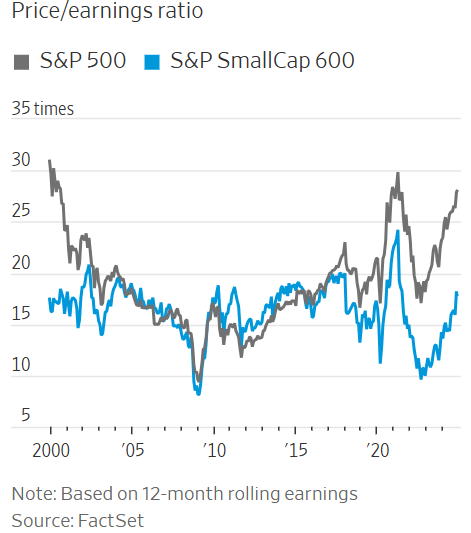
The Diverging Trends in US and Indian Markets
The stock markets in the US and India are exhibiting contrasting dynamics. While large-cap stocks dominate the US market, driving its growth, the Indian market is witnessing a robust resurgence in mid and small-cap stocks. This divergence reflects the unique market forces and investor behaviors in each country, offering valuable insights into global and local investment trends.

Large-Cap Dominance in the US Market
In the US, the S&P 500’s growth has been primarily driven by a handful of large-cap stocks, particularly the top 10 names. Companies like Nvidia, Apple, and Netflix, which hold near-monopolistic positions in their industries, are attracting significant amounts of global capital. These companies are vital to their respective sectors, whether it’s technology, entertainment, or artificial intelligence, making them the focal point for international investors. As a result, the broader market, including small caps, has lagged in comparison.
A Surge in Indian Mid and Small Caps
India, on the other hand, is experiencing a different trend. While large-cap stocks remain steady, mid and small-cap stocks have seen rapid growth. This resurgence is fueled by broad-based participation, with retail investors entering the market in large numbers. Many first-time investors are contributing smaller amounts, creating a wide influx of funds into the broader market rather than concentrating on a few select stocks. The potential for growth in mid and small-cap companies in India is enormous, as these companies are often at the forefront of innovation and regional expansion.
Global Versus Local Capital Flows
The contrasting trends can also be attributed to the nature of capital flows. In the US, a significant portion of investment comes from global funds, which tend to focus on established, monopolistic companies with high returns on intellectual property. In India, the capital is more local, with increasing participation from domestic investors who are diversifying into equities. This democratization of investing is leading to a more distributed growth pattern, particularly benefiting mid and small-cap segments.
Sectoral Strengths and Concentration Risks
In the US, the concentration of capital in a few large-cap stocks poses potential risks. If these dominant companies face setbacks, it could significantly impact the overall market. In India, the broader distribution of investments reduces such concentration risks. However, the rapid rise of mid and small caps in India also warrants caution, as these segments can be more volatile and susceptible to market corrections.
WeekendInvesting launches – PortfolioMomentum Report
Momentum Score: See what percentage of your portfolio is in high vs. low momentum stocks, giving you a snapshot of its performance and health.
Weightage Skew: Discover if certain stocks are dominating your portfolio, affecting its performance and risk balance.
Why it matters
Weak momentum stocks can limit your gains, while high momentum stocks improve capital allocation, enhancing your chances of superior performance.
Disclaimers and disclosures : https://tinyurl.com/2763eyaz






